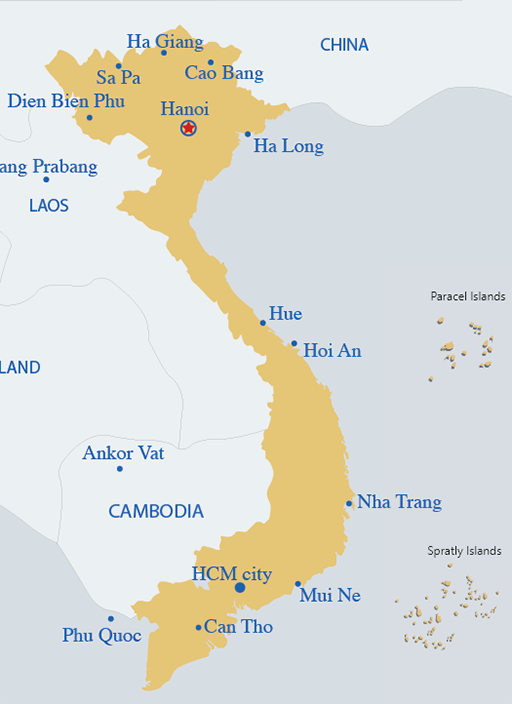
Considered as Côte d'Azur in Vietnam, Nha Trang attracts many foreign tourists every year. Sea, islands, mountains and delta make Nha Trang an attractive destination. Nha Trang beach, which stretches for 7km, is also called “the Mediterranean beach of Vietnam”. The city has hundred of historic monuments. The mountain range to the west of the city is home to a wide variety of animals, especially many kinds of birds.
There are many domestic flights from Sai Gon, Hanoi, Dang Nang every day. But if you want a local experience, a train trip from Sai Gon or Da Nang is also a good choice.
Best period: from October to April.
During this trip, you will like:
o Many beautiful beaches
o Scuba diving
o Historical and cultural sites
o Daily life of inhabitants
o Local markets unknown to travelers
Nha Trang has many picturesque beaches. We mention three main beaches:
• Nha Trang beach in the city center
• Hon Tre Island: Located opposite the town of Nha Trang, this island is the region's best known entertainment center. You can get there by boat (Cau Da pier) or by cable car. Despite its tourist development, nature lovers can still enjoy wild beaches, fishing villages and green nature. Do not miss Vinpearl Land, an entertainment and accommodation complex.
• Whale Island (Hon Ong): a good address if you want to spend a night on this island. The bamboo bungalows overlook the bay, on the edge of a 100m long beach. The luxury here is nature, turquoise water and underwater wildlife.
We advise you to visit some historical and cultural sites in Nha Trang:
• Long Son Pagoda: Built in 1886, Long Son is one of the oldest pagodas in the region. It is located 3km from the city center and has a reclining Buddha, 17m long, surrounded by 49 stone monks. The pagoda offers a breathtaking view of Nha Trang.
• The Po Nagar temple: Located on a hill next to the sea, this temple is an address well known to all visitors. If you want to discover the Champa culture, don't miss a visit on this temple.
• Cho Dam market: Cho Dam is a small wonder, a great opportunity to see and to understand the way of life of local population.
